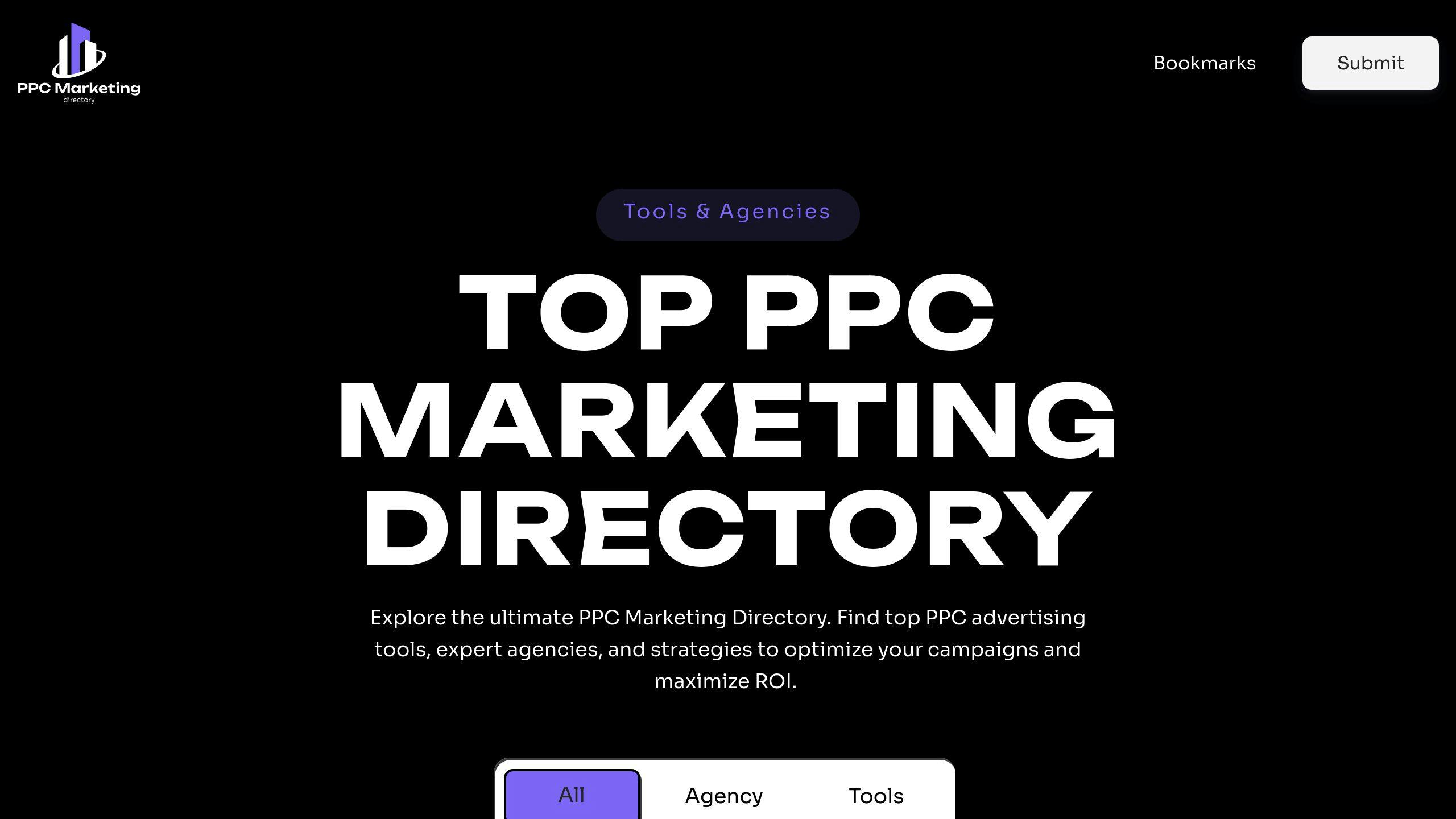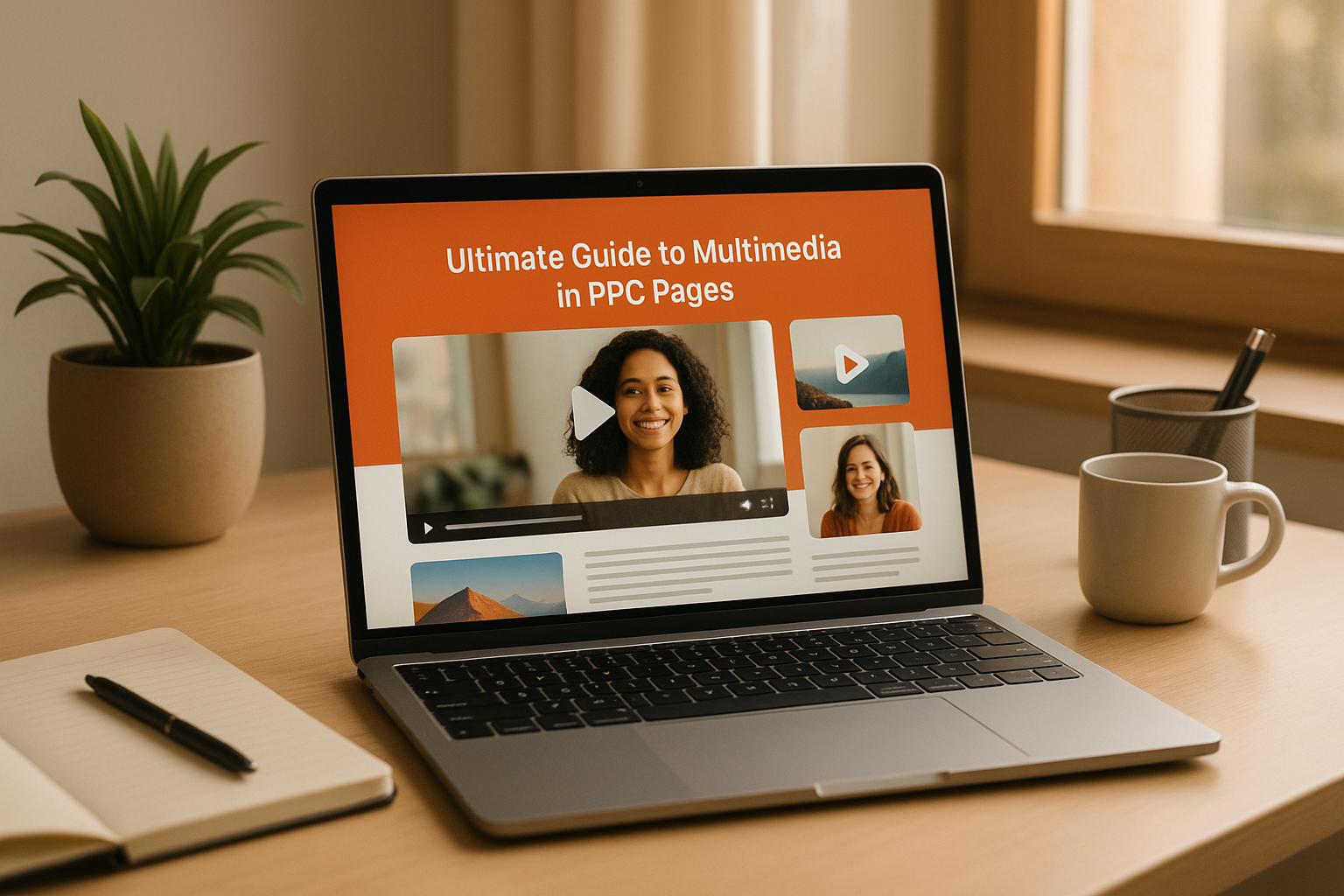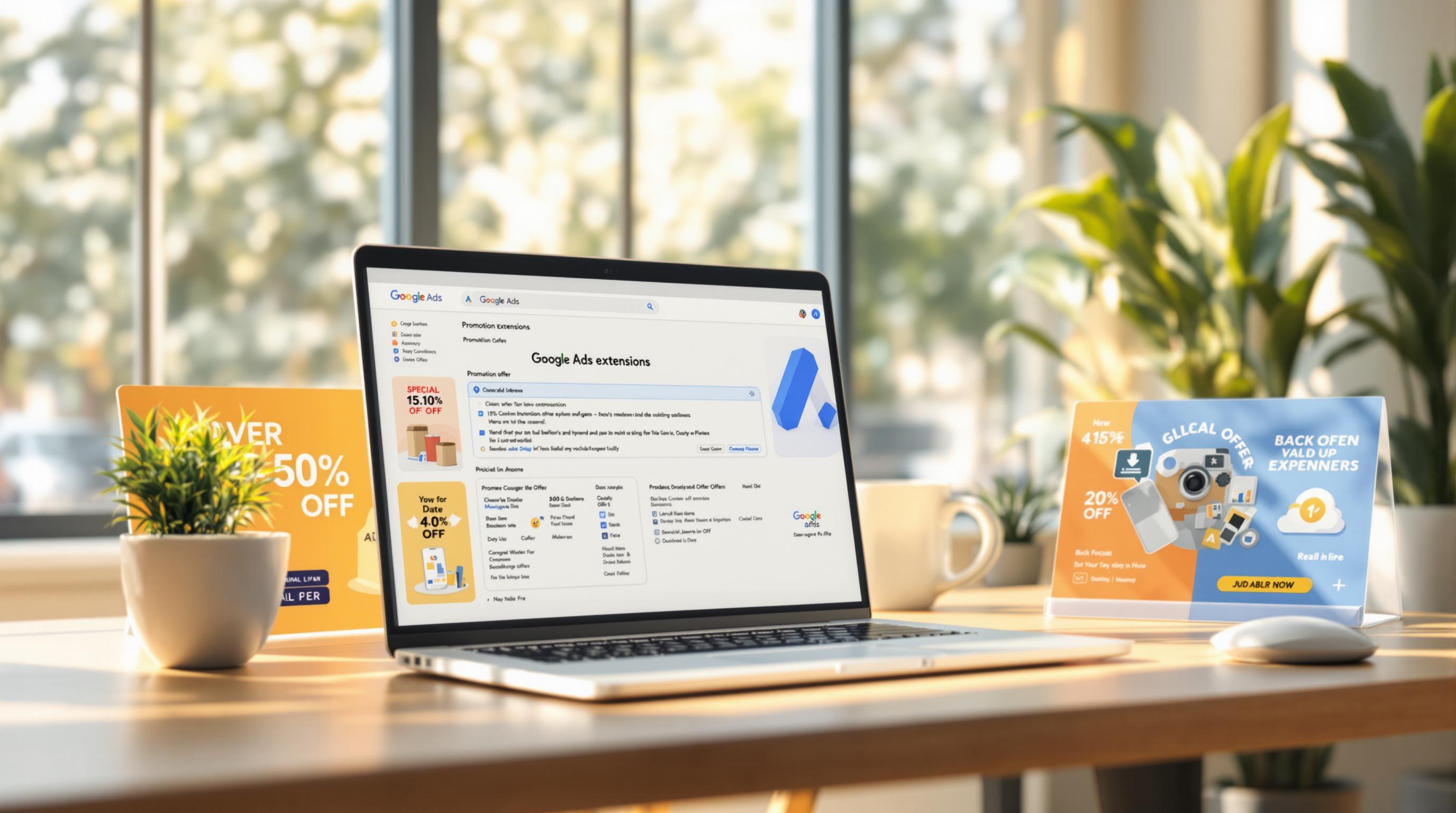Want to improve your PPC campaigns? Start by analyzing your competitors' keyword strategies. Here's how:
- Discover new opportunities: Identify high-performing keywords your competitors are using to find untapped potential.
- Boost campaign performance: Learn from competitors' successful tactics to enhance your ads.
- Maximize ROI: Use tools like SEMrush and SpyFu to make smarter bidding decisions.
- Stay ahead: Regularly track competitors to adapt to changes in the PPC landscape.
Steps to Follow:
- Identify competitors using tools like Google Ads Auction Insights, SEMrush, or SpyFu.
- Analyze their keywords for search volumes, CPC trends, and performance metrics.
- Spot keyword gaps and opportunities like long-tail keywords or seasonal trends.
- Evaluate competitors' ad content and landing pages to refine your strategy.
- Implement insights to improve your campaigns while maintaining your unique brand identity.
Quick Tip: Review competitor data every 1-3 months to stay competitive and adjust your campaigns as needed.
How to Spy On Competitors Google Ads

Step 1: Identify Your Competitors
Pinpointing and analyzing the right competitors is a key part of building an effective PPC keyword strategy. Here's how you can systematically identify and categorize your competition.
Use Tools to Spot Competitors
Start with Google Ads Auction Insights to find competitors based on metrics like impression share and overlap rate. For a deeper dive, tools like SEMrush or SpyFu can help you analyze keyword portfolios, ad spend, and bidding behaviors [4][2][3].
Differentiate Between Direct and Indirect Competitors
Not all competitors are the same. Understanding the difference between direct and indirect competitors allows you to focus your analysis where it matters most.
- Direct Competitors: These are businesses targeting the same audience with products or services similar to yours. They often bid on many of your core keywords and compete head-to-head for your customers [5][3].
- Indirect Competitors: These companies may bid on overlapping keywords but focus on different audiences or offer complementary products [5][3].
Once you've identified and categorized your competitors, you're ready to dive deeper into their keyword strategies. This groundwork will help you uncover opportunities to strengthen your PPC campaigns.
Step 2: Analyze Competitors' Keywords
After identifying your competitors, it's time to dig into their keyword strategies. By using the right tools and metrics, you can gather insights to improve your PPC campaigns.
Use Keyword Research Tools
Platforms like SEMrush, Ahrefs, and SpyFu are great for exploring search volumes, keyword rankings, CPC trends, and ad performance metrics. These tools can show you which keywords are driving traffic and conversions for your competitors [2][3].
Spot Keyword Gaps
Look for areas where your competitors might be falling short. Focus on:
- Long-tail keyword variations
- Industry-specific terms or geographic modifiers
- Seasonal trends and product-specific features
These gaps can uncover opportunities that others may have missed.
Evaluate Keyword Performance
Analyzing performance metrics helps you decide which keywords are worth focusing on. Here's a quick breakdown:
| Metric | What to Analyze | Why It Matters |
|---|---|---|
| Cost-per-Click (CPC) | Average bid amounts | Helps you manage your budget |
| Click-Through Rate (CTR) | Ad engagement levels | Indicates how relevant your ad is |
| Conversion Rate | Likelihood of purchases | Shows profitability |
| Quality Score | Ad relevance score | Impacts your ad's position and cost |
To stay competitive, review your competitors' keywords every 1-3 months. Regular updates help you spot new trends and adjust your campaigns accordingly [1][3].
For more resources, check out the Top PPC Marketing Directory (https://ppcmarketinghub.com), which offers tools and services to simplify keyword research and campaign optimization.
Once you've assessed keyword performance, the next step is to analyze how competitors are using these keywords in their ad copy.
sbb-itb-89b8f36
Step 3: Evaluate Competitors' Ad Content
When reviewing competitors' ad content, focus on critical elements such as headlines, descriptions, calls-to-action (CTAs), and special offers. These are the driving forces behind grabbing attention, sparking engagement, and encouraging conversions.
Analyze Ad Copy and Creative
| Element | What to Examine | Why It Matters |
|---|---|---|
| Headlines | How they grab attention | Drives initial clicks |
| Descriptions | Benefits they highlight | Communicates the ad's value |
| CTAs | How they prompt action | Influences conversion rates |
| Special Offers | Deals or promotions used | Impacts customer decisions |
Use tools like SEMrush and SpyFu to track how competitors refine their ads over time [3]. Look for patterns in emotional language, benefits-focused messaging, pricing strategies, special promotions, and mobile-friendly adjustments. These details can reveal what resonates with their audience.
Study Competitors' Landing Pages
Analyzing landing pages helps you understand how competitors turn clicks into customers. A strong landing page aligns with the promises made in the ad, which is crucial for maintaining good Quality Scores and driving conversions [1].
Key Elements to Watch:
- Placement and length of forms
- Trust-building features like testimonials or certifications
- Mobile optimization
- Fast loading times
- Clear and compelling value propositions
Rather than directly copying competitors, use their strategies to uncover gaps or opportunities where your approach can stand out [1]. Tools like SpyFu can also help you monitor changes to competitors' landing pages, offering insights into which elements consistently perform well [2].
Step 4: Implement Competitor Insights
Use what you've learned from competitors to improve your PPC campaigns while keeping your brand's unique identity intact.
Refine Your Keyword Strategy
Take the competitor keywords you've identified and integrate them into your campaigns. Focus on long-tail keywords and untapped opportunities for better returns.
| Keyword Type | Strategy | Expected Outcome |
|---|---|---|
| Long-tail Keywords | Target specific, less competitive phrases | Higher conversion rates, lower CPCs |
| Gap Keywords | Identify and target areas competitors miss | Reach untapped audiences |
| High-performing Terms | Bid selectively on proven keywords | Boost visibility in valuable searches |
For example, a study by 42connect found that targeting competitor keywords strategically resulted in a 25% increase in ad clicks and a 15% reduction in cost-per-click [1]. Focus on keywords that offer strong returns and steer clear of oversaturated markets.
After refining your keyword strategy, ensure your ad copy and targeting align with these insights for maximum impact.
Improve Ad Copy and Targeting
Leverage competitor insights to create ads that stand out and highlight your unique value.
How to Get Started:
- Study competitor ads to spot effective elements, but avoid direct imitation.
- Experiment with variations of competitor strategies, then refine based on performance.
- Use competitor data to fine-tune your audience targeting.
To make these improvements efficiently, having the right tools at your disposal is crucial.
Top PPC Marketing Directory

The Top PPC Marketing Directory connects you with tools and services to help you implement your competitive analysis:
- Access advanced keyword research tools for in-depth competitor insights.
- Use campaign management platforms to streamline execution.
- Explore A/B testing tools to fine-tune your strategies.
- Find retargeting solutions to boost campaign performance.
Track your campaign's metrics regularly with performance monitoring tools and adjust your strategy as needed based on real results.
Conclusion: Applying Insights to Action
Key Points
Taking a structured, data-focused approach to PPC competitor analysis can significantly improve your campaign results. Here's what to prioritize:
- Identify Competitors Strategically: Pinpoint both direct and indirect competitors to get a clear picture of your market.
- Dive Deep into Analysis: Study their keyword strategies and performance to uncover areas where you can grow.
- Implement Smart Adjustments: Use competitor data to refine your campaigns while emphasizing what sets your brand apart.
Why Regular Analysis Matters
Reviewing competitor keywords on a monthly or quarterly basis helps you stay ahead of trends and seize new opportunities. Tools like SEMrush and SpyFu make it easier to keep tabs on competitors' PPC efforts [2][3].
Actionable Steps:
- Keep an eye on emerging keyword trends.
- Watch for changes in how competitors bid on keywords.
- Adapt your campaign budgets as market conditions shift.
FAQs
Here are answers to common questions about using competitor analysis to improve your PPC campaigns.
How do I track competitors' keywords and Google Ads?
Tools like SEMrush and SpyFu make it easier to track your competitors' keywords by offering detailed data on keyword usage, ad spend, and bidding trends [2][3]. Google's tools are also a great starting point. For example:
- Auction Insights provides metrics like impression share and overlap rates.
- Keyword Planner helps you gauge keyword competition and estimate costs [4].
For more advanced insights, paid tools can uncover:
- Historical ad copy trends
- Gaps in keyword strategies
- Competitor bidding behavior
- Long-term performance tracking [3]
Google Ads' built-in features are especially helpful for:
- Viewing impression share and overlap
- Analyzing position metrics
- Estimating budgets needed to compete [4][1]
When choosing tools, think about your goals and budget. Paid tools offer detailed analysis, but Google's free options are a solid choice for businesses new to PPC analysis. Using these tools effectively can help you fine-tune your campaigns to stay ahead of competitors and improve your ROI. Regularly reviewing your data ensures your strategies remain effective in the fast-moving world of digital advertising.


